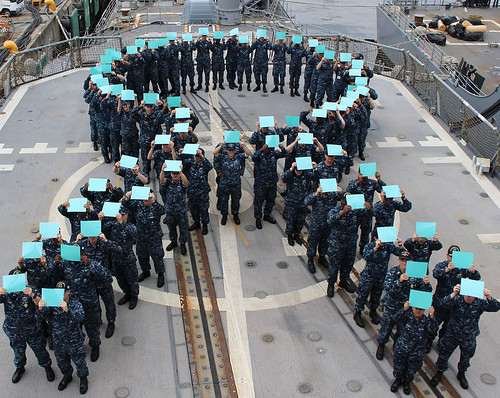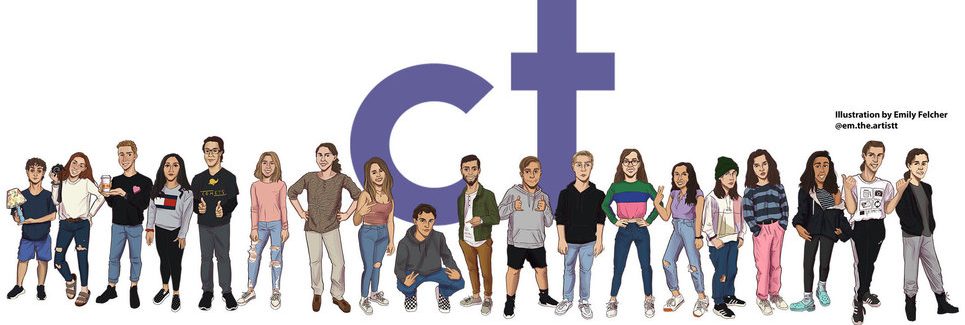This is HER story
Sexual Assault Awareness

This is a representation of the “Teal” ribbon that signifies sexual assault awareness. Sexual Assault is a prevalent issue today.
It never has and never will be the victim’s fault. April is designated as Sexual Assault Awareness Month (SAAM). SAAM is an annual campaign to raise awareness on sexual assault, harassment, and abuse as well as help with the prevention of these acts. In the 2000s, SAAM’s goal was to bring awareness to the teal ribbon and the meaning behind it.
“Common goals: to raise visibility about sexual assault and share how it can be prevented, whether that’s through education about healthy sexuality, consent, or bystander intervention.” (NSVRC)
In more recent years, the SAAM movement focused on expanding their audience to those other than advocates. They tried expanding it to those who may not know how important their role is in preventing sexual violence of any kind. They also focused on how parents, leaders and coaches can become “agents of change.”
“SAAM will continue to grow and adapt, reaching even more audiences with the message that a world free of sexual assault and abuse is possible.” (NSVRC)
Sexual Assault is more common than most people think. Every 73 seconds an American is sexually assaulted, and every 9 minutes that victim is a child. The majority (66%) of underaged victims are between the ages of twelve and seventeen. In the general public, 433,648 humans are sexually assaulted each year. Of every 10 people, 9 of them are female and 1 is male. The good news is, the number of assaults has fallen by more than half since 1993.
Sexual Assault can happen anywhere, even online. Every year, about 55% of assaults happen near or at the victim’s home, 15% are in an open public place, 12% are at or near a relative’s home, 10% are in an enclosed public area, and 8% are on school property. More statistics can be found on the RAINN website for sexual violence.
Looking for warning signs is critical in the prevention of sexual assault. Teenagers may experience things such as: unusual weight gain or weight loss, unhealthy eating patterns, signs of physical abuse, sexually transmitted infections (STIs) or other genital infections, signs of depression, anxiety or worry, falling grades, changes in self-care, self-harming behavior, expressing thoughts about suicide or suicidal behavior, and drinking or drug use (NSVRC).
This is HER story.
WARNING: please do not read if sensitive towards sexual assault. This story is to inform those on the situations happening in our community.
A student at Grand Ledge High School (who would like to remain anonymous) was sexually assaulted the week before she entered her freshman year. She was completely blindsided the night it happened. All she knew was that she was living a typical teenage life, sneaking out with her friends and having fun. Everything seemed to be normal. Due to some circumstances, she was unable to give consent. This is what led to the horrific event. While it was happening, she didn’t know what to do. He held her down and constantly harassed her. She mentions how it was all a blur.
The morning after the incident, she woke up in just her undergarments. She didn’t think twice about it and moved on with her life as normal. It was not until she went to school that she realized what had happened.
Rumors spread around the school that she had slept with a football player. Her reputation was ruined. The power this upperclassman had over her was indescribable. He had the power to change people’s opinions on her, just because of his age. These rumors quickly spread and she ended up being harassed at football games from the upperclassmen. She was asked questions like “What was it like?” “Did you enjoy it?” Questions no one wanted to answer. The worst thing about this is that she had to go to school with the male that raped her.
A few weeks later the complete realization happened. She started putting the pieces together and let herself go. The one big thing she did during this time was talking to her family about it. This was extremely difficult. Unfortunately, they did not believe her, which made the situation worse. She was sent to emergency therapy. This is like a mental hospital. Sadly, she spent her fifteenth birthday there. It took a few months, but things started looking up.
Spring break of her freshman year took a toll on her. An explicit picture of her was spreading around the school. Her friend had mentioned seeing this image and she was distraught. There lied her bare body, in nothing but her undergarments. In the image, she was unconscious. The male that assaulted her lied behind her without a shirt and only a blanket covering him. He looked at her like she was a trophy, a prize. After hearing about this image, she finally went to the police. She wanted justice and to be heard. Both of which didn’t happen.
She wanted to end this ongoing nightmare. Since the two people involved were minors, the police looked at it as revenge, not a rape incident. The police let him off with a warning and therapy. This is not what was supposed to happen. The girl also was given mandatory therapy time. The police threatened her with a charge of false rape allegation if she did not go to these therapy sessions. Now, this is horrendous. There was more than enough evidence to support her case and prove that this was a true incident. Police are supposed to be there to support their communities, not file falsely against them. Her case did not make it to court.
To this day, she has frequent nightmares of this male holding her down. She suffers from PTSD and anxiety due to the incident. She experiences frequent panic attacks. She did not want attention, and she felt as if no one would believe her. This experience caused her to lose friends and start her high school career off alone. In 2020, she spoke about her story on social media. This was big for her. She still struggles with the pain, but she wants to be an influence to other females going through it. She wants to voice her opinions to remind the survivors that they are not alone and it is not their fault.
Along the way, there have been things that have helped her cope with the trauma. These things include: breathing exercises, looking in the mirror and repeating positive things about herself, positive reinforcement with her friends, making a schedule of how she wanted her day to go, tracking feelings, making time for herself, and participating in community work.
This student wanted people to know that sexual violence is not the survivor’s fault and it does get better eventually. She also voiced that other people and rape do not define those who experience it.
“Rape doesn’t limit you from doing anything, its what you do with yourself afterward that counts”
The biggest thing she had to say is watch for the people that are close in your life, they tend to be the ones that commit rape, not strangers. Additionally, wearing revealing clothing does not give someone a more likely chance of being raped. She advocates being aware of surroundings and what people are doing to drink.
She is a survivor.
Not only this month, but every other month of the year, be aware of others. Watch for warning signs. Check up on loved ones. Those going through this, remember, YOU ARE NOT ALONE! and IT IS NOT YOUR FAULT! Stand up for yourself and those who may be suspected of going through it. Experiencing something out of the ordinary? The National Sexual Assault Hotline is (800)656-HOPE.

Hello! I am Olivia, a senior here at Grand Ledge High School. I've been a part of the Varsity Sideline and Competitive Cheer teams since my sophomore year....





